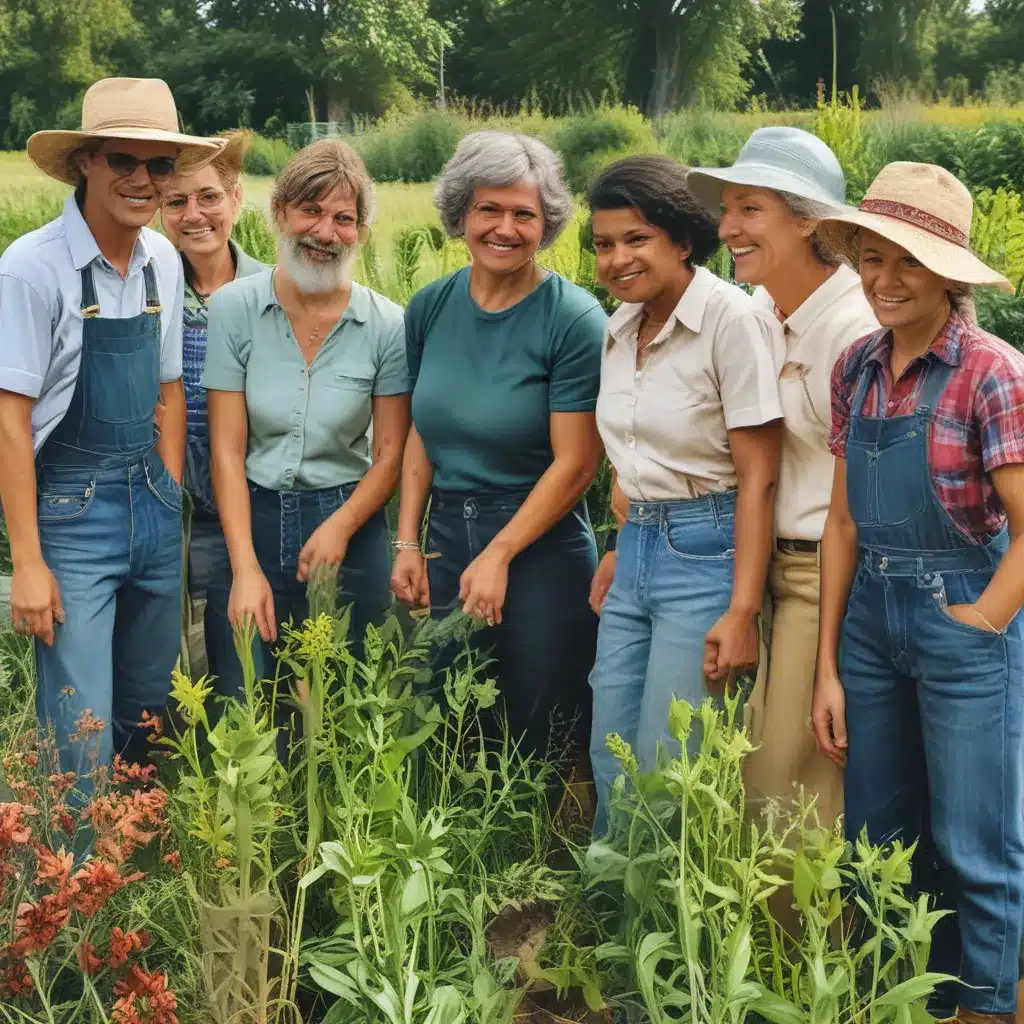
As a proud member of the Thornappple CSA, I’ve learned firsthand the incredible benefits that come from embracing diversity in our farming practices. It’s not just about the bounty of fresh, flavorful produce that ends up in my weekly share – it’s about the underlying resiliency that this diversity provides to our local food system.
The Perks of Polychrome Planting
When you take a stroll through our CSA’s fields, the vibrant kaleidoscope of colors and textures is nothing short of mesmerizing. From the deep verdant leaves of kale and chard to the sun-kissed hues of tomatoes and peppers, our farmers have deliberately chosen to cultivate a wide array of crops side-by-side. And there’s a method to this madness, I can assure you.
According to a recent report by the Nature Conservancy, this “crop mixing” approach can boost resilience in agricultural systems by mitigating risks and enhancing overall productivity. By planting a diverse tapestry of plants, our farmers are essentially creating an insurance policy against the unpredictable challenges that Mother Nature may throw our way.
Imagine a scenario where a sudden drought grips our region. While a monoculture farm might see its entire corn crop wither and die, our CSA’s fields would likely fare much better. The deep, extensive root systems of our sweet potatoes would help them thrive even in dry conditions, while the leafy greens would be able to conserve precious water through their waxy, drought-resistant leaves. Similarly, if a hungry pest invasion targeted a particular crop, the diversity of our plantings would limit the damage and ensure that plenty of other nourishing options remain.
Nature’s Own Integrated Pest Management
But the benefits of crop mixing don’t stop there. As I’ve learned from our CSA’s farmer education sessions, this approach also serves as a highly effective form of integrated pest management (IPM) – a sustainable approach to controlling pests and diseases that minimizes the use of harmful chemicals.
You see, when you have a monoculture, pests and pathogens can spread like wildfire, devastating an entire crop. But in a diverse agricultural ecosystem, those same pests and diseases often struggle to gain a foothold. The sheer variety of plants, each with their own unique defenses and ecological relationships, creates a complex web that confuses and overwhelms potential invaders.
For example, our farmers have strategically interspersed aromatic herbs like basil and mint throughout the vegetable beds. Not only do these herbs add delightful flavors to our weekly shares, but their strong scents also act as natural repellents, deterring many common pests. Meanwhile, the presence of diverse flowering plants encourages beneficial insects like ladybugs and lacewings, which prey on crop-damaging aphids and other unwanted critters.
As the Food and Agriculture Organization of the United Nations points out, this complex, interconnected ecosystem is far more resilient than a monoculture, which is essentially a sitting duck for pests and diseases. And by reducing our reliance on pesticides, we’re also protecting the health of our soil, water, and the broader environment.
Reaping the Rewards of Resilience
Of course, all of this diversity doesn’t just happen by chance. It requires careful planning, observation, and a deep understanding of the ecological relationships at play. Our CSA’s farmers are true masters of this art, meticulously selecting which crops to grow together and how to arrange them for maximum benefit.
And the rewards of their efforts are plain to see. Year after year, even in the face of unpredictable weather patterns and emerging pest threats, our CSA has been able to deliver a bountiful, diverse harvest to our members. While other farms in the region may struggle, we can rest assured that our table will be filled with a vibrant array of fresh, nutrient-dense produce.
As a Barclays report noted, this kind of resilience is becoming increasingly critical in the face of climate change and other environmental challenges. By embracing diversity in our farming practices, we’re not only ensuring the long-term viability of our local food system, but we’re also contributing to a more sustainable, equitable future for all.
So the next time you bite into a crisp, juicy carrot or savor the sweetness of a freshly harvested tomato from your Thornappple CSA share, take a moment to appreciate the incredible web of life that made it possible. It’s a testament to the power of diversity, and a reminder that by working in harmony with nature, we can reap bountiful rewards.



